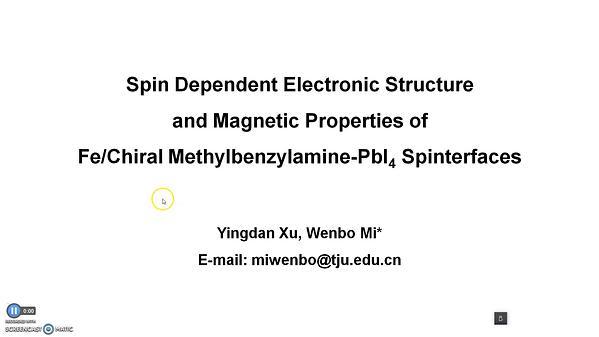Would you like to see your presentation here, made available to a global audience of researchers?
Add your own presentation or have us affordably record your next conference.
Bismuth-substituted yttrium iron garnets (Bi:YIG) have attracted recent interest due to the possibility of having coexisting perpendicular magnetic anisotropy (PMA) and
ultralow Gilbert damping (~10-4) 1–3. The existence of ultralow damping, however, has so far been accompanied by the presence of substantial inhomogeneous broadening (~10–100 Oe). The relevant parameter for applications is the total ferromagnetic resonance (FMR) linewidth, and so it is of interest to minimize the inhomogeneous broadening as well as the damping. Here we demonstrate the presence of both ultralow damping (≤ 5 × 10-4) and low inhomogeneous broadening (≈ 10 Oe) in a series of epitaxial PLD-grown Bi:YIG/GSGG(111)films. However, achieving these low linewidths requires the magnetization to be approximately parallel to the 100 crystallographic direction (roughly 55 degrees relative to the film normal), as seen in the figure. It is extremely unusual to observe a minimum linewidth for intermediate angles—typically a sharp maximum is observed where the angle of the magnetization is most sensitive to changes in the angle of the applied field 4. We show that for a film grown on a GGG(100) substrate, the perpendicular FMR linewidth at 20 GHz (≈ 30 Oe) is much smaller than for the films grown on (111) substrates (≥ 60 Oe). Furthermore, the minimum in the linewidth as a function of angle is not nearly as sharp and occurs at approximately 35 degrees relative to the film normal. For applications, it is crucial for the FMR linewidth to be small for perpendicular magnetization. We discuss potential causes for the anomalous angular dependence of the FMR linewidth and how to minimize it for perpendicular magnetization. This work was supported by SMART, a center funded by nCORE, a Semiconductor Research Corporation program sponsored by NIST.
References
1 Soumah et al., Nat. Comm. 9, 3355 (2018).
2 Lin et al., JMMM 496, 165886 (2020).
3 Caretta et al., Science 370, 1438 (2020).
4 Woltersdorf and Heinrich, Phys. Rev. B 69, 184417 (2004).

Full-width-at-half-maximum FMR linewidth as a function of magnetization angle θ relative to the film normal for a 70 nm Bi:YIG/GSGG(111) film. Angles corresponding to 111 and 100 crystallographic directions are indicated
